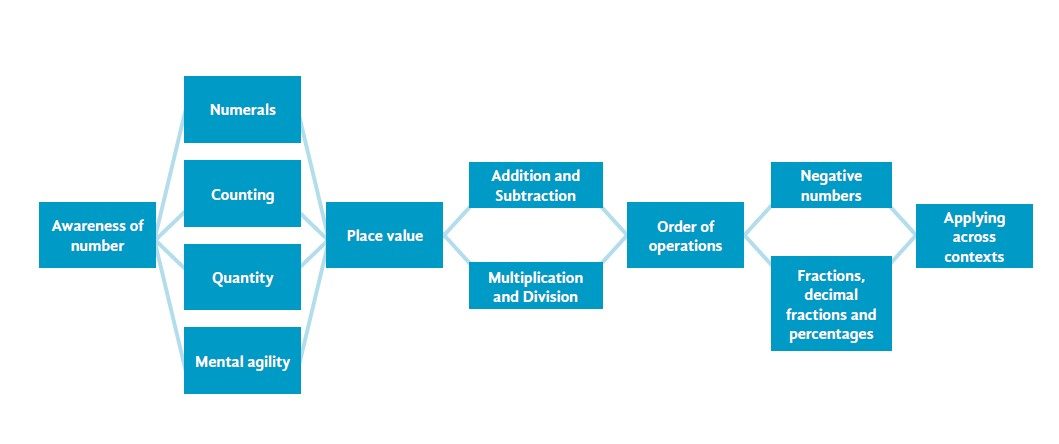
I have been thinking for years why a significant number of students (approximately 20 students,14% of our cohort ) enter high school without basic level 1 Cfe skills.
These students can’t number bond within 100, some can’t do it within 10. They are highly inaccurate in terms of any written algorithm. This is in the context of high performing catchment, about 50% of our cohort gain National 5 in s4(much higher than the national average).
I have worked with a similar group for the last 3 years and have made steady improvements, using physical resources, lots of spacing, interweaving and re-teaching on areas of weakness. It was in this vein I wanted to trial new methods for the algorithmic version of the four operations linking with mental agility and manipulatives.
The National progression framework highlights the importance of strong foundations of place value and mental addition before progressing to algorithmic methods( I agree). I disagree with the frameworks late addition of negative numbers. Students should meet this as soon they begin subtraction i.e 5+-3 should come before 5-3, others share this belive such as director of La Salle Education Mark McCourt. I spent a significant amount of time teaching addition and subtraction of negatives before the new algorithms.
There has been very little research into which methods promote best understanding and fluency. The Lindy effect would suggest a type of cumulative professional evidence for the current methods.
Jo Morgon published a very timely book “a compendium of mathematical methods“, this gave me a much greater understanding of current and alternate techniques for teaching the four operations but Jo draws no conclusions as to which methods are superior.
Most of the students have made positive progress this year and greater progress than their peers from the in house models. This shows the new methods have at least not had a negative effect on learning but I do worry about transitions to other classes if this was not a consistent departmental method.

Hi Barry,
Thank you for these insights. Reading your blog generated a few questions for me:
– You mention that you have been thinking over this matter for a while, out of curiosity, what is your hypothesis as to why this happens?
– Also your point about negative numbers, would you mind explaining this a little more? I’m not sure I understand rationale behind teaching 5+-3 before 5-3
– You also mention how you are concerned about transitions if this isn’t a shared department method; I’m wondering how you intend to share your thinking and successes even if schools haven’t physically returned?
Thanks again interesting questions.
In terms of the number of students entering without the basic skills I think is a number of related causes. The first is the lack of focus on mastery. We must as a nation expect all students to master basic number skills early on. There needs to be clear assessment and re-teaching for areas of weakness, a response to intervention model would be beneficial. Reteach to 80% of the class are proficient, 15% small group intervention and the remaining few will need one to one support to obtain the required level. I think Cfe implementation has also had a negative impact. I have looked carefully at PISA results and Scotland is in decline, especially in maths. Although international comparisons are hard, I think it’s fair to compare us to the rest of the UK nations and England in the same period of time have made gains, I think this may be a reflection of there more structured key stage examinations and progress 8 measure. These give much clearer guidance and pathways for students and teachers I knowing the required standard.
With regard to negative numbers. The problems lies in how these are modelled. If you are doing 5+-3 with Cuisenaire rods or counters it’s easy to see it the same problem as 5 – 3. It also embeds a numerical misconnection that negatives are a separate classification. Subtracting is really an additive inverse in much the same way that division is multiplicative reciprocal ( 8 x ½ = 8 ÷2) if this is done with a physical resource at first students can make this connection.
In terms of sharing the new methods, I will certainly share the poster and my findings at an online departmental meeting. It will hard sell to get others to change the teaching of the four operations and to be fair I don’t know if they should for all. As an intervention, it might be worthwhile for students that have failed to gain fluency as the novel aspect gives them a bit more motivation to have another go, a fresh start.